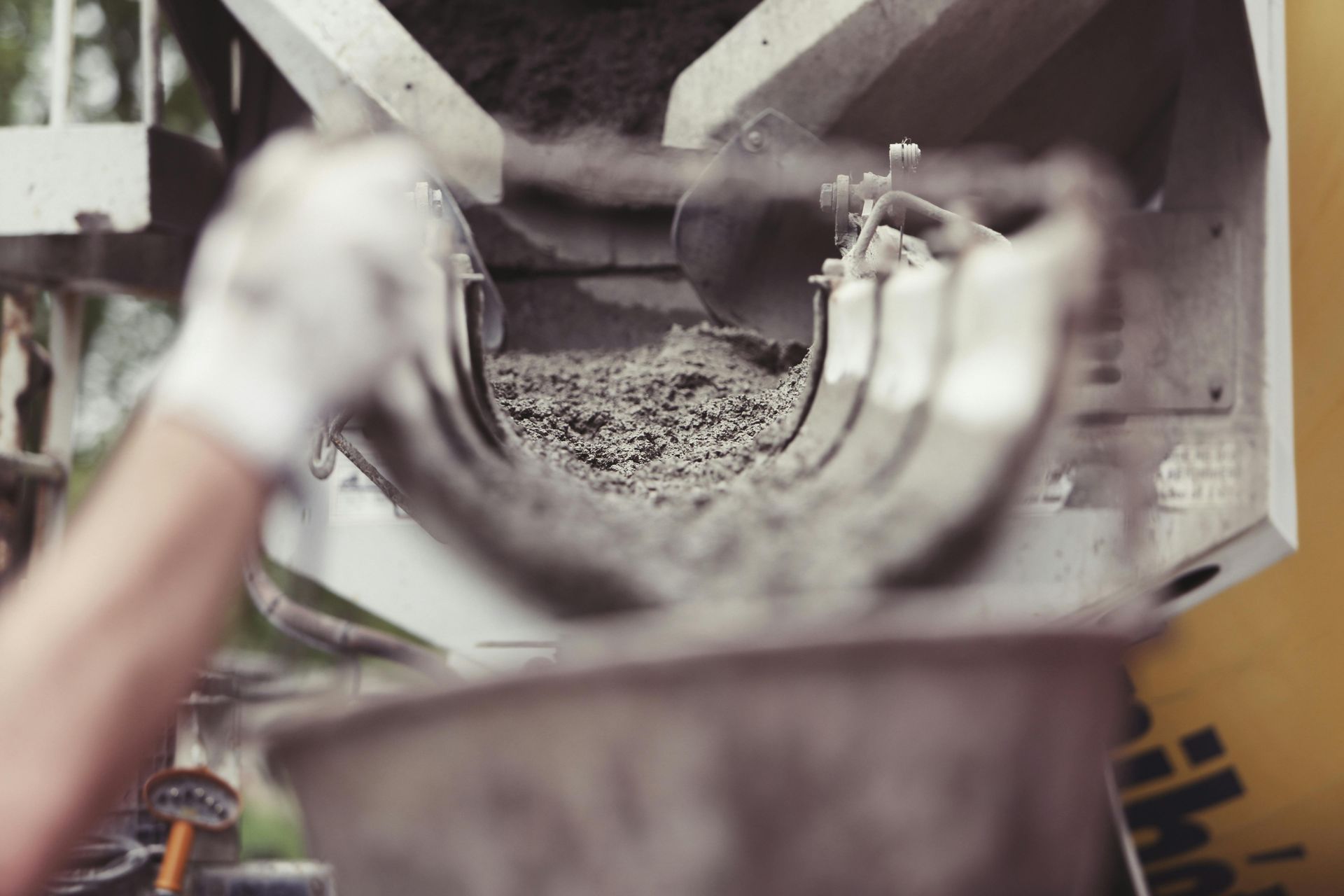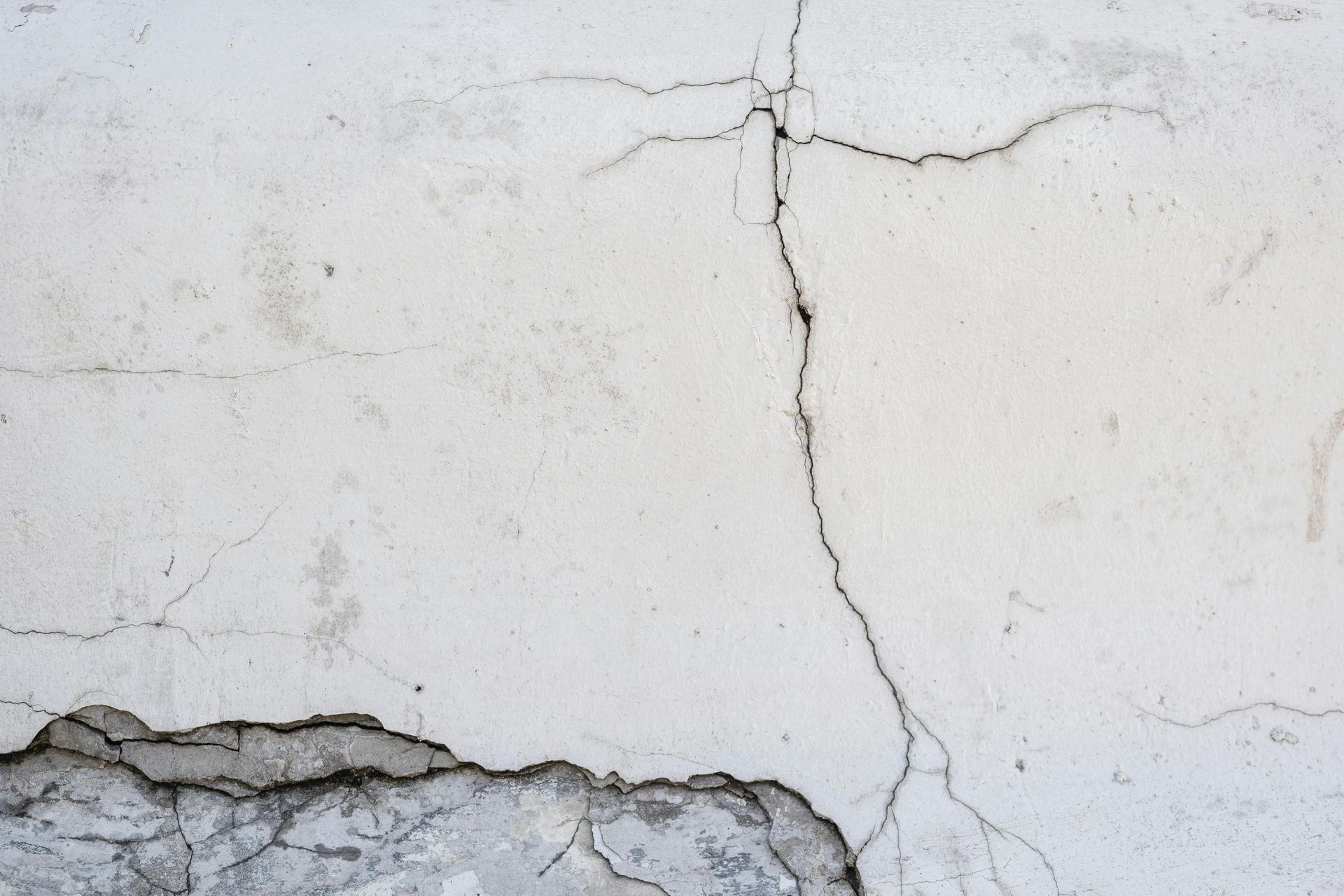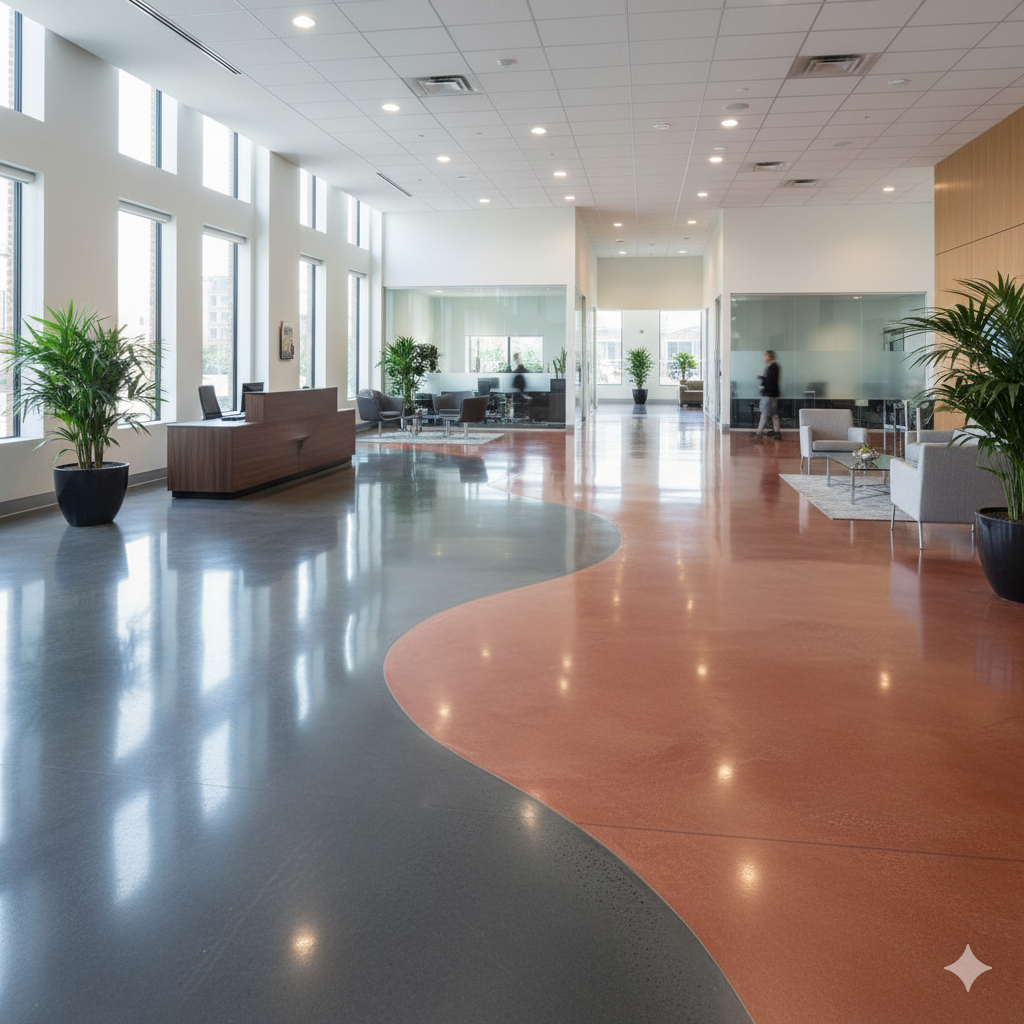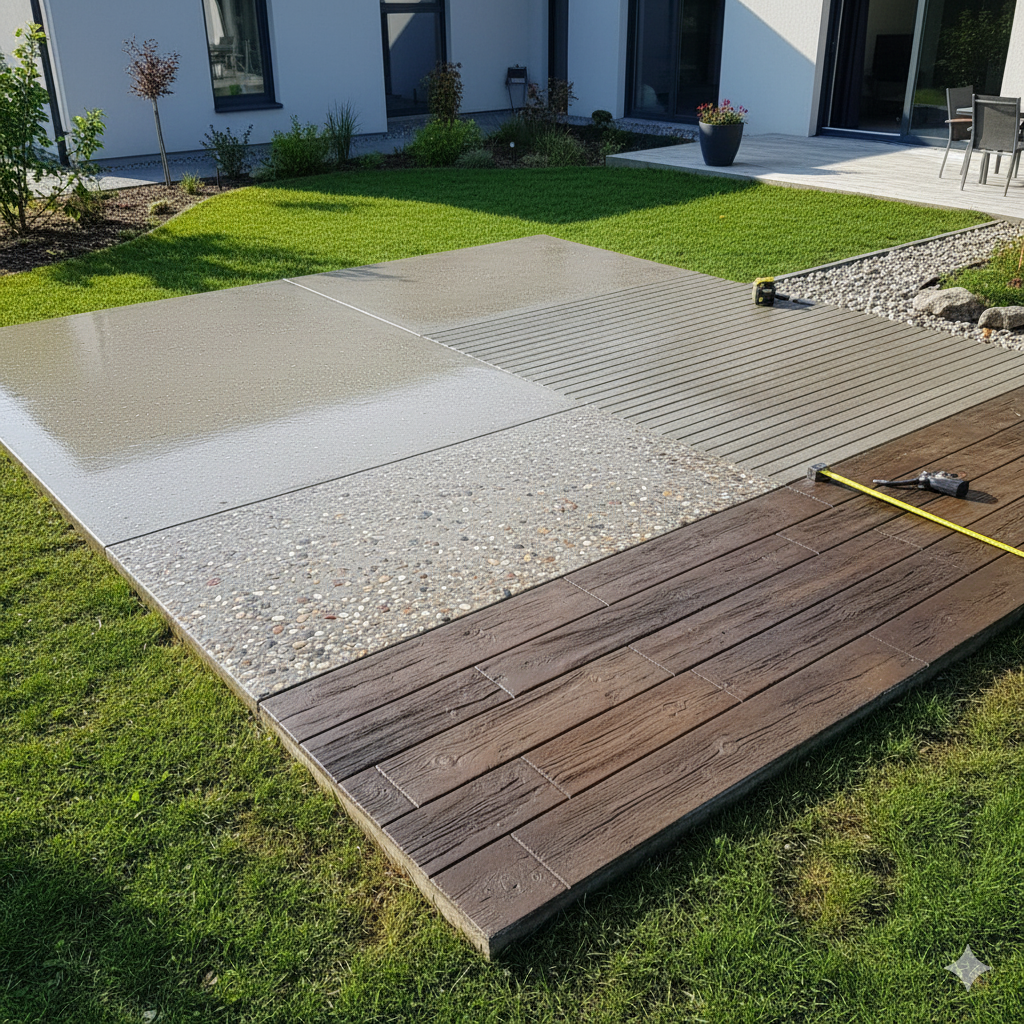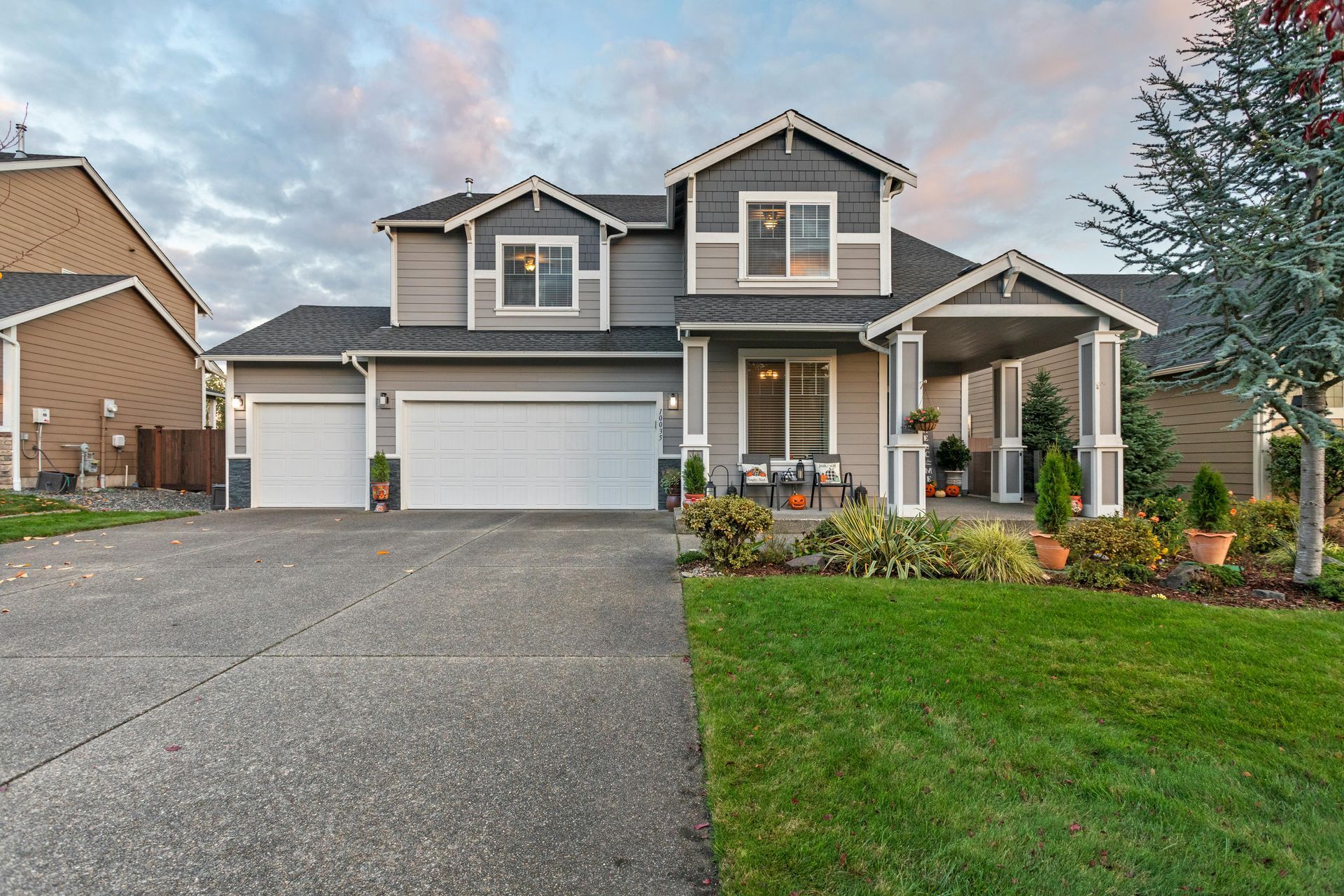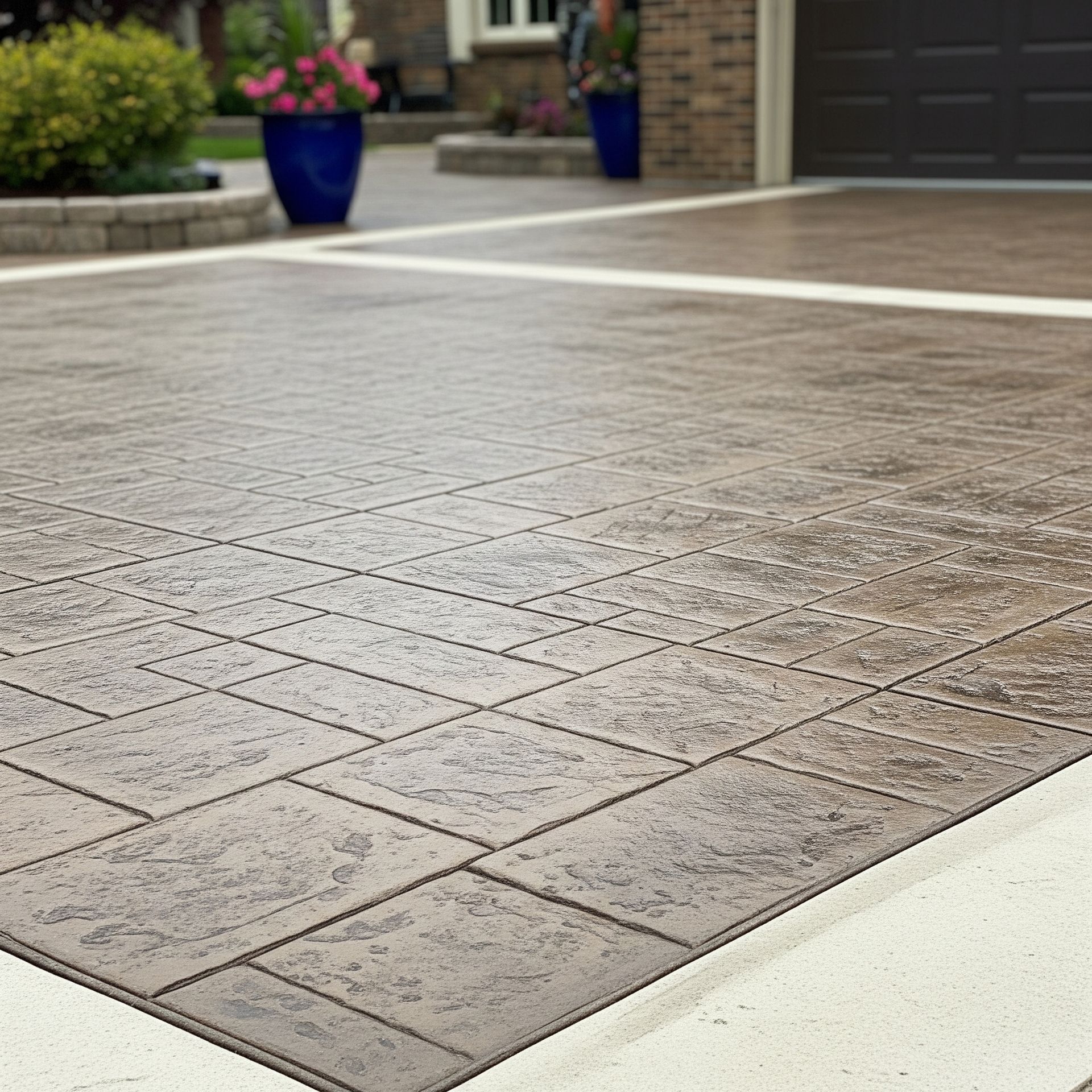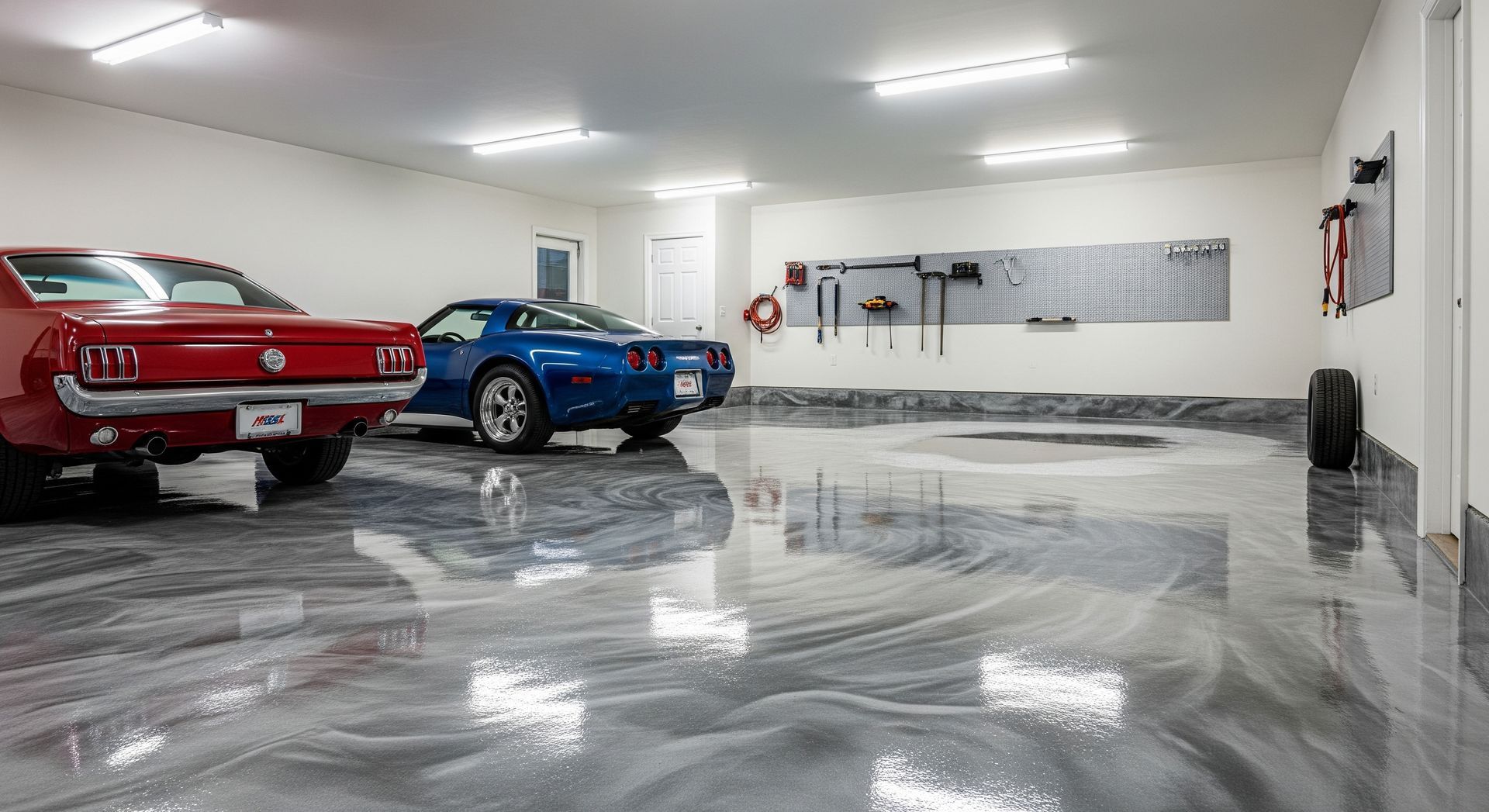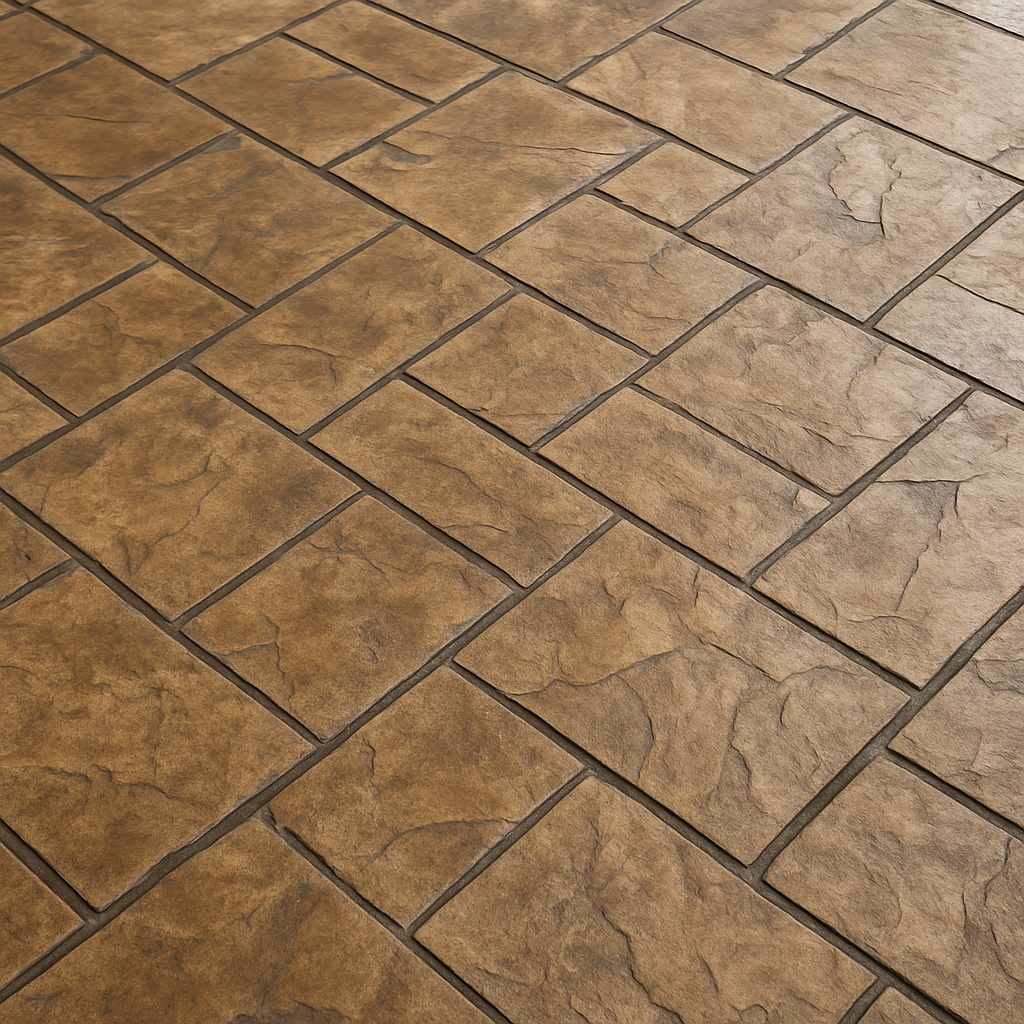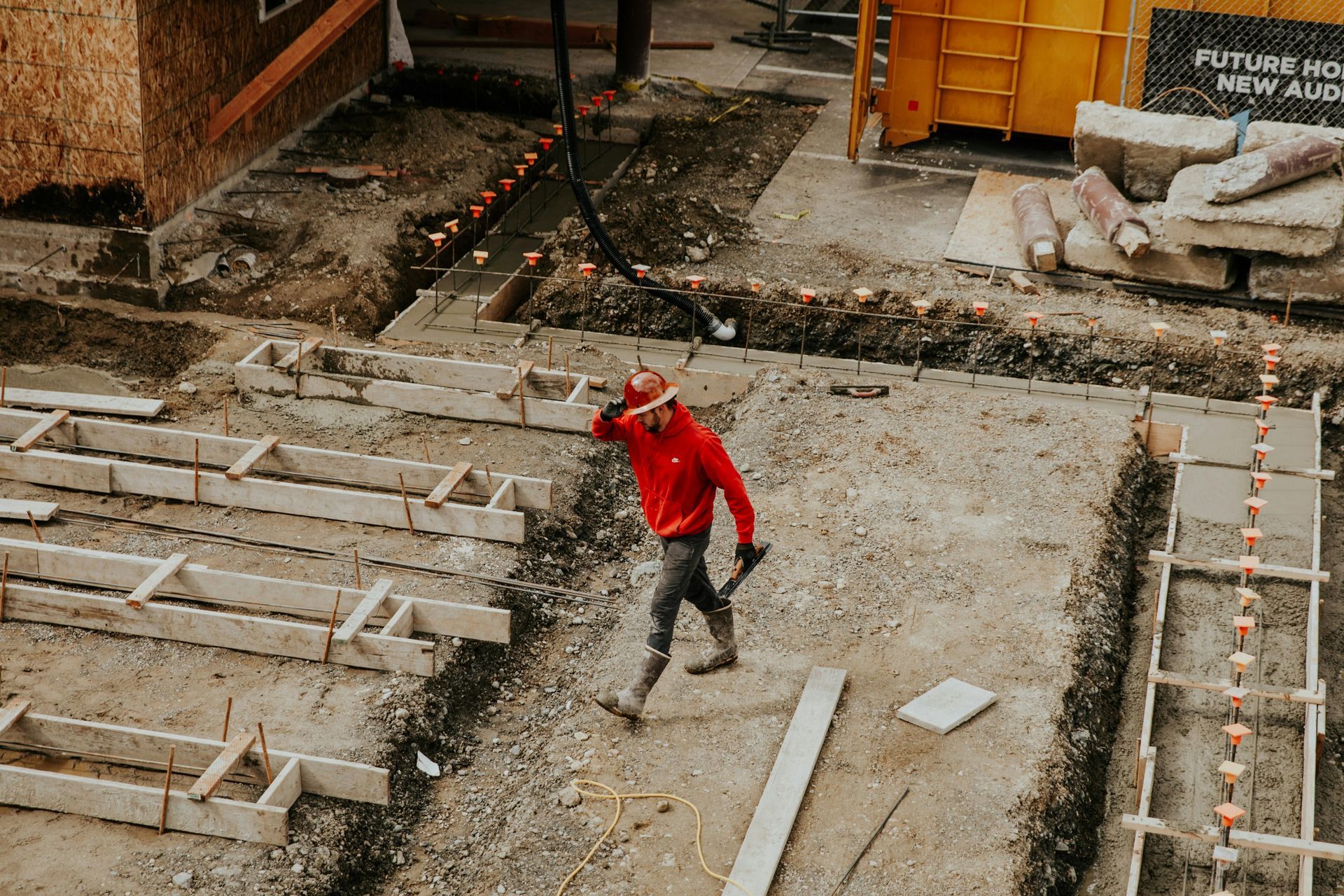Best Decorative Concrete Finishes for Florida Patios
Key Takeaways
- Stamped concrete offers versatile patterns that mimic brick, wood, and stone, enhancing patio aesthetics and slip resistance
- Exposed aggregate provides a natural textured stone look that is durable, low maintenance, and weather-resistant
- Acid staining creates rich, vibrant color variations with layered depth, adding unique visual interest to concrete patios
- Polished concrete delivers a sleek, shiny surface that reflects light, offering a modern, stylish, and low-maintenance finish
- Decorative inlays embed materials like glass or metal for personalized, dimensional designs that elevate patio appeal
Stamped Concrete Fl Patterns for Unique Textures
Stamped concrete is a versatile paving material that adds visual interest and texture to your Florida patio without the high cost and complex installation of traditional materials. The stamping process involves pressing specialized molds into freshly poured concrete to create realistic textures and patterns. By mimicking the appearance of brick, wood, stone, and other natural surfaces, stamped patterns let you achieve the look you want.
Beyond the aesthetic, stamped concrete offers practical benefits. The textured surface improves slip resistance when wet, creating a safer outdoor environment for family members and guests.
When selecting a stamped pattern, consider your overall design preference, like rustic, contemporary, or artistic styles. The flexibility of stamped concrete allows you to combine multiple patterns, creating a customized look that reflects your personal style. For example, you can primarily use a brick pattern in the main seating area with a stone border around the perimeter.
The durability of stamped concrete makes it an excellent long-term investment. With proper sealing every two to three years, stamped surfaces can maintain their appearance for 10 to 15 years or longer. The patterns won't fade, chip, or peel like paint, making their visual appeal last as they are part of the concrete itself.
Key Benefits:
- Versatile design options that mimic natural materials
- Enhanced slip resistance for safety
- Customizable pattern combinations
- Cost-effective alternative to traditional materials
- Long-lasting durability with proper maintenance
Exposed Aggregate for a Natural Stone Look
Exposed aggregate combines the appearance of authentic stone with the practical advantages of concrete. This finish exposes small stones within the concrete, creating a textured surface that is both durable and visually appealing. The aggregate materials, such as pebbles, stones, or crushed glass, are mixed into the concrete before pouring and then revealed through a specialized washing and brushing process.
Texture and Visual Appeal
The exposed aggregate finish creates distinctive textural variety depending on the aggregate size and composition. The following table illustrates the different options available:
| Aggregate Type | Visual Appearance | Surface Feel | Overall Effect |
|---|---|---|---|
| Smooth Aggregate | Earthy tones with subtle definition | Slightly rough | Refined, natural look |
| Coarse Aggregate | Mixed colors with prominent texture | Firm grip | Rustic, textured appearance |
| Polished Aggregate | Subtle sparkle and shine | Comfortable walk | Contemporary with natural elements |
With this type of decorative concrete, you can create a patio that reflects your landscape design and architectural style. The natural colors of exposed aggregate blend seamlessly with various outdoor environments, from Mediterranean gardens to contemporary minimalist spaces.
Maintenance and Durability
Exposed aggregate keeps its appearance with minimal maintenance. The natural stone texture effectively resists wear due to exposure to Florida weather and foot traffic, making it ideal for high-traffic patio areas. Unlike smooth concrete that can become slippery when wet, exposed aggregate provides excellent traction throughout the year.
To protect the surface from stains and fading while preserving its appearance, you can apply a quality sealant on the concrete every two years. Because its routine care only consists of regular sweeping and occasional rinsing, this type of material is perfect for homeowners who want to balance aesthetic appeal and practical upkeep. The sealant also helps prevent moisture from penetrating the concrete, which can cause deterioration.
Acid Staining for Vibrant Color Variations
Acid staining creates rich, complex color variations that turn the concrete into a visually dynamic surface. Unlike paint, acid staining chemically reacts with the concrete itself, producing permanent, one-of-a-kind coloration that cannot be replicated. Each concrete surface responds differently to acid stain based on its mineral content and porosity.
Color Depth and Application Techniques
Successful acid staining relies on proper surface preparation and application technique. The process involves layering different tones to create depth and complexity. Each application layer adds dimensional interest, and the resulting finish evolves throughout the concrete's surface. Professional stainers often apply multiple coats of acid in different concentrations to achieve interesting color shifts and visual effects.
The usual colors resulting from acid staining include warm earth tones, cool blues and greens, and rich jewel tones, which add a luxurious appeal to outdoor spaces. The final appearance can range from subtle and sophisticated to bold and dramatic, depending on your color selections and application methods.
Follow these steps for optimal results:
| Step | Tool Required | Key Consideration |
|---|---|---|
| Surface Cleaning | Pressure washer | Remove all dirt, grease, and debris |
| Concrete Etching | Acid etcher | Follow safety guidelines carefully |
| Stain Application | Sprayer or brush | Work in small sections for even coverage |
| Sealing | Roller or brush | Apply while surface is dry |
Long-Term Care and Durability
Acid-stained concrete should be maintained to preserve its vibrant appearance for years. Use gentle, pH-neutral cleaners with a soft brush to prevent dulling the color. Avoid harsh chemicals that can compromise the finish. The stained surface should be sealed every two years to protect the concrete against weather damage and wear. Spills should be promptly attended to to prevent staining and keep the patio looking fresh. With proper maintenance, acid-stained patios typically retain their color vibrancy for 15 to 20 years or more.
Polished Concrete for a Sleek Modern Finish
Polished concrete has a contemporary look that fits modern design aesthetics. The grinding and polishing processes the concrete undergoes give it a smooth, reflective surface that enhances light and visually opens up outdoor spaces. Multiple grinding stages, beginning with coarse grits and progressing to finer ones, gradually refine the concrete surface until the desired level of shine and smoothness is achieved.
This finish seals the concrete surface, making it less prone to staining and simplifying its maintenance. The reflective quality of polished concrete can brighten darker outdoor areas and create the illusion of expanded space. With its sleek appearance, polished concrete can be adapted into various furniture styles and landscape designs, making it perfect for diverse outdoor environments. Because this type of concrete is low-maintenance, you get to spend more time enjoying your patio rather than maintaining it. Regular sweeping and occasional damp mopping are typically all you need to keep polished concrete looking pristine.
Colored Concrete for Personalized Spaces
Adding color to concrete directly affects your patio's visual impact and personality. Strategic color selection allows your outdoor space to harmonize with your landscape, architecture, and furnishings. Warm earth tones like terracotta, sand, and warm brown create a calm, inviting atmosphere that is perfect for relaxation. Bold colors like deep blues, vibrant reds, or rich purples make striking visual statements and create energetic gathering spaces.
Simple coordination techniques, such as matching your patio color with landscape elements, planters, or cushions, create a cohesive outdoor design. Consider how different colors interact with natural sunlight at various times of day, as this affects how your patio appears throughout the seasons. Light colors reflect heat and remain cooler underfoot during summer months, while darker colors absorb heat and can become uncomfortable in hot climates.
Colored concrete combines this aesthetic flexibility with practical durability. Besides, it requires minimal maintenance while withstanding weather and regular use. The color is mixed throughout the concrete rather than applied as a surface treatment, so it won't fade or peel over time.
Overlay and Resurfacing for Renewal
If your existing patio shows signs of wear, overlay and resurfacing techniques are cost-effective renovation options. Overlays function as durable surface coatings that conceal cracks and stains while adding texture and improved grip. This approach saves you the expense and disruption of completely having the concrete replaced, typically costing 30-50% less than pouring new concrete.
Overlays can be combined with other decorative finishes, such as stamping or staining, to create entirely new looks on aging patios. Resurfacing techniques smooth rough spots and restore the surface quality that you want, whether sleek or rustic. Both methods allow you to select new finishes that match your current design preferences and style. The overlay process generally takes just a few days, which means minimal disruption to your outdoor living space.
Stenciling and Decorative Inlays for Artistic Expression
For those seeking distinctive artistic elements, stenciling and decorative inlays transform concrete into customized outdoor art. Stenciled patterns range from geometric designs to organic motifs and let you customize the concrete finishing. Professional stencilers can create intricate borders, medallions, and focal points that add sophistication to your patio.
Decorative inlays embed materials such as stone, metal, or glass directly into the concrete surface to create designs with visual depth. These techniques create a patio that functions as both a practical outdoor space and artistic statement, encouraging family and friends to hang out and enjoy the craftsmanship. Glass inlays can be lit from below for dramatic evening effects, while metal accents add a contemporary flair or rustic charm, depending on the material selected.
Frequently Asked Questions
How long do decorative concrete finishes last?
Durability varies by finish type and climate conditions. Finishes typically last between 10 to 30+ years depending on the specific finish and maintenance practices. Stamped and polished concrete often last 15 to 20 years, while properly sealed acid-stained surfaces can maintain their appearance for two decades or longer.
What maintenance do these finishes require?
Most decorative finishes benefit from periodic sealing every two years and regular gentle cleaning. The specific maintenance requirements vary by finish type. Exposed aggregate and stamped concrete require periodic resealing and occasional power washing, while polished concrete needs only regular sweeping and damp mopping.
Are these finishes slip-resistant?
Many decorative finishes offer slip resistance, particularly stamped and exposed aggregate options. For maximum safety in wet conditions, select textured finishes or apply slip-resistant treatments. Polished concrete can become slippery when wet and may benefit from anti-slip coatings in areas prone to moisture.
Can decorative concrete be installed over existing patios?
Yes, overlay techniques allow new finishes to be applied over existing concrete after proper surface preparation ensures good bonding. The existing concrete must be structurally sound with no major cracks or settling issues.
What is the average cost of installing decorative concrete finishes?
Installation costs typically range from $8 to $18 per square foot, varying based on the finish type and regional labor rates. Stamped concrete averages $12 to $18 per square foot, while polished concrete and acid staining typically cost $10 to $15 per square foot.
Final Thoughts
Selecting the right decorative concrete finish for your patio allows you to create an environment that's both beautiful and practical. Whether you're drawn to a rustic stamped pattern, the natural appeal of exposed aggregate, or the modern look of polished concrete, each option brings its own character to your home. With some thought about your style and maintenance preferences, you can design a patio you'll enjoy for years to come.
Let’s plan your perfect decorative concrete finish—get your free quote now!
References:
https://en.wikipedia.org/wiki/Stamped_concretehttps://npic.orst.edu/ingred/bt.html
https://www.hsa.ie/eng/topics/slips_trips_falls/pedestrian_surfaces/measuring_slip_resistance/
